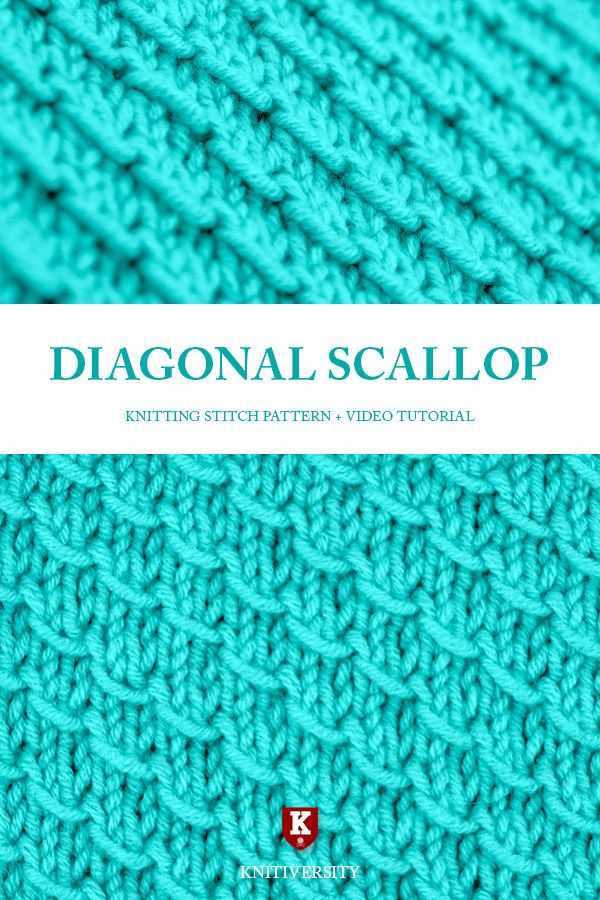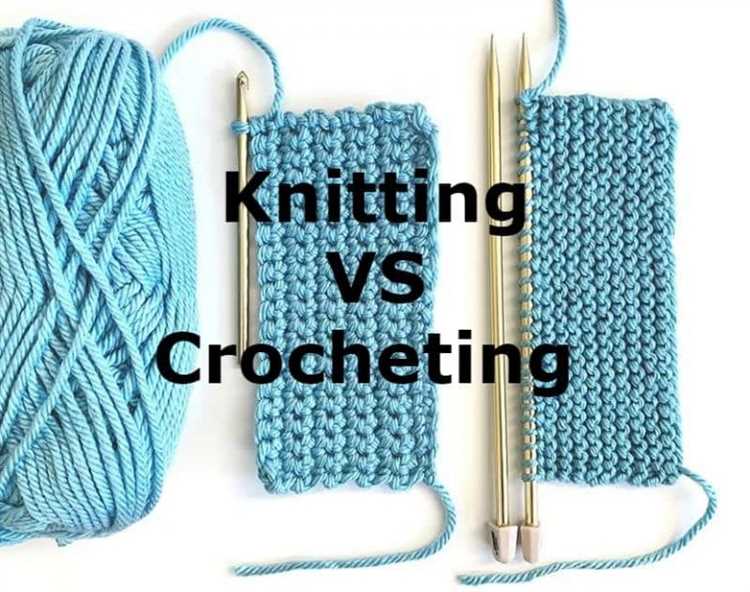When it comes to the world of fiber crafts, two techniques are often compared: crochet and knitting. While both involve creating fabric with yarn, they differ in the tools used and the resulting textures. Many people wonder which technique is harder: crochet or knitting. The truth is, it depends on the individual and their preferences. Both crochet and knitting have their own set of challenges and learning curves.
Crochet is known for its use of a single hook to create stitches. This hook allows for more flexibility and the ability to easily add or remove stitches. The resulting fabric in crochet tends to be denser and sturdier. However, mastering the various crochet stitches and techniques, such as the chain stitch, single crochet, and double crochet, can take time and practice.
On the other hand, knitting uses two or more needles to create stitches. This technique allows for more intricate patterns and a wider range of textures. Knitting can be more intuitive for some people, as the stitches are created by inserting the needle into loops on the previous row. However, keeping track of multiple needles and stitches can be challenging for beginners.
In the end, whether crochet or knitting is harder depends on your personal preferences, learning style, and the time and effort you’re willing to invest. Some people find crochet easier to pick up due to its simplicity and flexibility, while others prefer the more intricate nature of knitting. Regardless of which technique you choose, both crochet and knitting offer a rewarding creative outlet and the ability to make beautiful handmade items.
Is Crochet Harder Than Knitting?
Crochet and knitting are both textile crafts that involve creating fabric using yarn and a set of needles or hooks. While they share similarities, they have distinct differences that impact the difficulty level of each craft.
Here are some factors to consider when comparing the difficulty of crochet and knitting:
- Techniques: Crochet is typically done using a single hook, while knitting uses two or more needles. The techniques used in crochet and knitting differ significantly, which may make one craft easier to learn than the other for some individuals.
- Movements: Crochet requires the use of one hand to manipulate the hook and yarn, while knitting involves using both hands to hold the needles and work the stitches. Some people find the single-handed movement of crochet easier, while others may find the two-handed movement of knitting more natural.
- Stitch Variety: Crochet offers a wide range of stitch patterns and designs, making it versatile and allowing for intricate details. Knitting also has various stitch patterns, but the overall range may be slightly more limited compared to crochet. This variety in stitch patterns can impact the difficulty level of a project.
- Pattern Reading: Both crochet and knitting require the ability to read patterns. However, crochet patterns tend to use more abbreviations and symbols, which may be more challenging for beginners. Knitting patterns often use more written instructions, which can be easier to follow for some individuals.
- Tension Control: Crochet tends to have tighter tension and more structure because of the use of a single hook. Knitting allows for looser tension and more drape due to the use of multiple needles. Tension control can impact the appearance and difficulty of a project, with some individuals finding one craft more challenging than the other in terms of maintaining consistent tension.
In conclusion, the difficulty of crochet versus knitting depends on personal preferences, dexterity, and learning style. Some individuals may find crochet easier due to its single-handed movements and variety of stitch patterns, while others may prefer knitting for its two-handed movement and written pattern instructions. Ultimately, both crafts require practice and patience to master.
Knitting Basics
Knitting is a popular craft that involves creating fabric by interlocking loops of yarn with knitting needles. It is a versatile skill that can be used to create a wide variety of items, including garments, accessories, and home decor.
Here are some basic steps to get started with knitting:
- Gathering Supplies: To begin knitting, you will need knitting needles and yarn. Knitting needles come in various sizes and materials, such as wood, metal, or plastic. Yarn can be made from different fibers and comes in different weights. Choose needles and yarn that are suitable for your project.
- Casting On: Casting on is the first step in knitting. It involves creating the foundation row of stitches on the knitting needle. There are different methods for casting on, such as the long-tail cast on or the knitted cast on. Each method creates a different edge and stretchiness.
- Knit Stitch: The knit stitch is the fundamental stitch in knitting. It creates a smooth “v” shape on the fabric. To knit, insert the right-hand needle into the first stitch on the left-hand needle from front to back, wrap the yarn around the right-hand needle, and pull the loop through the stitch, sliding it onto the right-hand needle.
- Purl Stitch: The purl stitch is another basic stitch in knitting. It creates a bump or a purl on the fabric. To purl, insert the right-hand needle into the first stitch on the left-hand needle from back to front, wrap the yarn around the right-hand needle, and pull the loop through the stitch, sliding it onto the right-hand needle.
- Knitting patterns: Knitting patterns provide instructions for creating specific projects. They include information about the stitches, yarn, and needle size to use, as well as step-by-step instructions for each row. It is important to carefully read and follow the pattern to achieve the desired result.
- Increasing and Decreasing: Once you have the basic knit and purl stitches down, you can start learning different techniques to increase or decrease the number of stitches. These techniques are used to shape the fabric and create patterns.
- Binding Off: Binding off is the final step in knitting. It involves removing the stitches from the needle to create a finished edge. There are various methods for binding off, such as the standard bind off or the stretchy bind off. Choose the method that works best for your project.
Knitting may seem daunting at first, but with practice and patience, you can master the basic techniques and create beautiful knitted items. Remember to start with simple projects and gradually build your skills. Enjoy the process and have fun exploring the world of knitting!
Crochet Basics
- Crochet is a technique that uses a single hooked needle to create fabric.
- It involves pulling loops of yarn through other loops to create stitches.
- Crochet stitches can be easily undone and corrected, making it a forgiving craft for beginners.
- There are several basic crochet stitches, including the chain stitch, single crochet, double crochet, and treble crochet.
- The chain stitch is the foundation for most crochet projects and is used to create the starting row.
- Single crochet is a simple stitch that creates a tight and dense fabric.
- Double crochet is taller than single crochet and produces a looser fabric.
- Treble crochet is even taller than double crochet and creates an open and lacy fabric.
- Crochet projects often involve combinations of these basic stitches to create various patterns and textures.
- There are different types of crochet hooks available, including metal, plastic, and wooden hooks with varying sizes to accommodate different yarn weights.
- Crochet patterns are typically written using abbreviations and symbols to represent each stitch and its placement.
- It is important to understand and follow the pattern instructions to create the desired result.
- Crochet can be used to create a wide range of items, including garments, accessories, home decor, and toys.
Learning the basics of crochet is a great way to start exploring the world of fiber arts. Once you grasp the basic stitches, you can begin to experiment with different patterns and techniques to create unique and personalized projects.
Differences Between Crochet and Knitting
While both crochet and knitting involve creating fabric from yarn or thread, there are several key differences between the two crafts:
- Tools: Crochet requires a single hook, while knitting uses two needles.
- Stitches: Crochet stitches are created by looping yarn through previous stitches, while knitting stitches are formed by sliding loops of yarn from one needle to another.
- Structure: Crochet fabric tends to be thicker and more textured, while knitted fabric is generally more flexible and drapes easily.
- Speed: Knitting usually takes longer than crochet, as each stitch requires two motions. Crochet stitches are generally quicker to make.
- Designs: Crochet motifs and designs are often more intricate and three-dimensional, while knitting allows for complex colorwork and patterns.
Overall, the choice between crochet and knitting often comes down to personal preference and the desired outcome. Some people prefer the rhythmic motion of knitting, while others enjoy the speed and versatility of crochet. Both crafts offer endless possibilities for creativity and self-expression.
Difficulty Level of Crochet
Crochet can be considered both easier and more difficult than knitting, depending on the individual. Some people find the repetitive nature of crochet stitches easier to grasp, while others may struggle with the intricate hand movements required.
Here are some factors that contribute to the difficulty level of crochet:
- Hand Movements: Crochet involves more intricate hand movements compared to knitting. It requires holding the hook in one hand and manipulating the yarn with the other hand to create different stitches. This can take time and practice to master, especially for beginners.
- Stitches: Crochet stitches can vary in complexity, from basic single crochet to more advanced stitches like Tunisian crochet or filet crochet. Beginners can start with simple stitches and gradually progress to more intricate patterns and techniques.
- Tension: Maintaining consistent tension in crochet is crucial for producing neat and uniform stitches. Achieving the right tension can be challenging for beginners, as it requires practice to understand how tightly or loosely to hold the yarn and hook.
- Pattern Reading: Crochet patterns can be written in different formats, using abbreviations and symbols. Understanding and deciphering patterns can be overwhelming for beginners, but with practice and familiarity, it becomes easier to follow along.
Despite the potential difficulties, crochet offers a wide range of projects for all skill levels. Beginners can start with simple projects like scarves or dishcloths, while advanced crocheters can create intricate lace designs or complex garments.
The key to mastering crochet is to start with basic stitches, practice regularly, and gradually challenge yourself with more complex patterns. With dedication and persistence, anyone can become proficient in crochet, regardless of the initial difficulty level.
Difficulty Level of Knitting
Knitting is a popular needlecraft that involves creating fabric by interlocking loops of yarn using knitting needles. While knitting may seem daunting to beginners, it is considered to be less challenging than crochet for several reasons.
Simplicity of Stitches: Knitting typically involves fewer types of stitches compared to crochet. The basic knit stitch and purl stitch are the foundation for most knitting patterns, and once you learn these, you can create a variety of textures and patterns.
Easy to Fix Mistakes: Unlike crochet, knitting allows for easier correction of mistakes. If a stitch is dropped or incorrectly done, it can be easily undone and fixed by unraveling the yarn back to the mistake and re-knitting the stitches correctly.
Pattern Reading: Knitting patterns are generally easier to read and follow than crochet patterns. They typically use standardized abbreviations and symbols that are consistent across patterns. Additionally, knitting patterns often include detailed row-by-row instructions, making it easier for beginners to understand the steps involved.
Visualization: Many people find it easier to visualize the stitches and patterns in knitting. The structure of knitted fabric is more apparent as the stitches create a grid-like pattern. This can make it easier to identify mistakes and understand the overall design of a project.
Supportive Community: Knitting has a strong and supportive community of enthusiasts who are always willing to offer guidance and help to beginners. There are numerous knitting forums, online communities, and local knitting groups where beginners can seek advice, get inspiration, and learn new techniques.
| Aspect | Difficulty Level | Knitting | Crochet |
|---|---|---|---|
| Simplicity of Stitches | Lower | ✓ | ✓✓ |
| Correction of Mistakes | Lower | ✓ | ✓✓ |
| Pattern Reading | Lower | ✓ | ✓✓ |
| Visualization | Lower | ✓ | ✓✓ |
| Supportive Community | Higher | ✓✓ | ✓ |
In conclusion, while knitting does have a learning curve, it is generally considered to be less challenging than crochet. The simplicity of stitches, easier mistake correction, pattern reading, visualization, and supportive community all contribute to the knitting’s lower difficulty level.
Choosing Between Crochet and Knitting
When deciding between crochet and knitting, it ultimately comes down to personal preference and the type of projects you want to create. Both crafts have their own unique characteristics and benefits, so it’s important to consider your own interests, skill level, and goals.
Here are a few factors to consider when choosing between crochet and knitting:
- Speed: Generally, crochet projects tend to work up faster than knitting projects. This is because crochet stitches are larger and require fewer stitches per inch than knitting. So, if you’re looking to complete a project quickly, crochet might be the better choice.
- Complexity: Knitting is often considered to have more intricate stitch patterns and techniques compared to crochet. If you enjoy complex patterns and are interested in learning different types of stitches, knitting might be the better option for you. However, both crafts offer a wide range of difficulty levels, so you can start with simpler projects and gradually work your way up.
- Portability: Crochet projects tend to be more portable than knitting projects. Crochet only requires one hook, while knitting requires multiple needles. This makes crochet projects easier to carry around and work on while traveling or on-the-go.
- Texture: Crochet has a unique texture that can create thicker and sturdier fabrics compared to knitting. If you’re interested in creating items like blankets, bags, or home decor with a heavier texture, crochet might be the better choice.
- Availability of Patterns: Both crochet and knitting have a wide variety of patterns available, but it’s worth noting that certain types of projects may have more resources in one craft than the other. For example, if you’re interested in making garments or accessories, you may find more knitting patterns available. However, both crafts offer countless options for creative projects.
Ultimately, the choice between crochet and knitting is a personal one. Many crafters enjoy both and choose to switch between the two depending on the project or their mood. The best way to decide is to give both crafts a try and see which one you enjoy more. Both crochet and knitting offer endless creative possibilities and can be enjoyable and rewarding hobbies.
FAQ:
Which is easier for beginners, crochet or knitting?
For beginners, crochet is generally considered easier than knitting. This is because crochet uses just one hook and requires only a few basic stitches, while knitting uses two needles and has more complicated stitch patterns.
Is it possible to learn both crochet and knitting?
Yes, it is absolutely possible to learn both crochet and knitting. Many people enjoy both crafts and find that they complement each other well. Learning one may even help you understand the other better as they share some similarities.
Is crochet faster than knitting?
It depends on the individual and their level of expertise. Some people find crochet faster because it generally requires fewer stitches to create a fabric. However, this can vary depending on the specific project and the speed at which a person knits or crochets.
Which is better for making wearable items, crochet or knitting?
Both crochet and knitting are suitable for making wearable items, and the choice often comes down to personal preference. Crochet can create thick and sturdy fabrics, while knitting can create lightweight and drapey fabrics. It’s best to experiment with both to see which technique achieves the desired result for the specific project.
Are there any health benefits associated with crochet and knitting?
Yes, crochet and knitting have been shown to have several health benefits. They can help reduce stress and anxiety, improve focus and concentration, and even provide a sense of accomplishment. Additionally, the repetitive motion of working with yarn can be soothing and meditative, offering relaxation and improved mental well-being.


